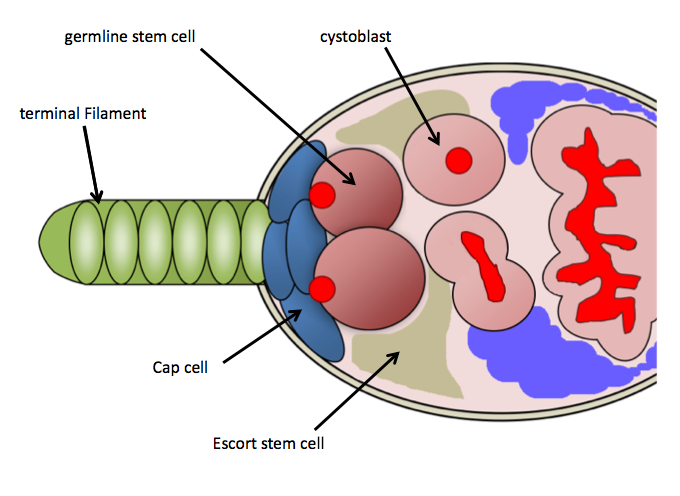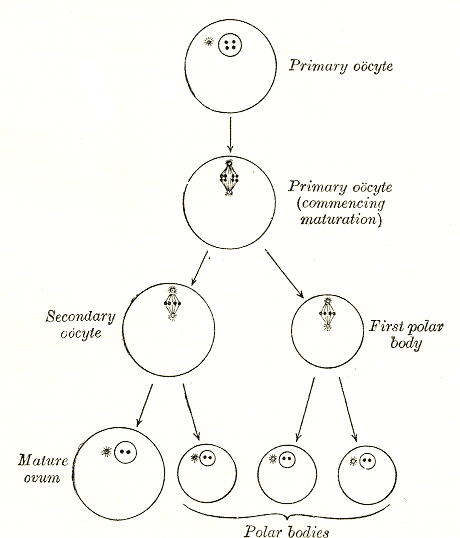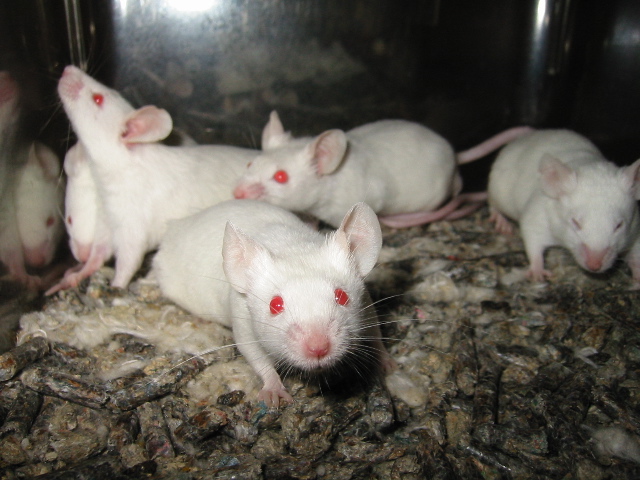|
Ovarioles
An ovariole is a tubular component of the insect ovary, and the basic unit of egg production. Each ovariole is composed of a germarium (the germline stem cell niche) at the anterior tip, a set of developing oocytes contained within follicles, and a posterior connection to a common oviduct. While most insects have two ovaries, the number of ovarioles within each ovary varies across insect species. This number may also be variable across individuals within a species, or between the left and right ovaries within an individual. Types Ovarioles are often classified into one of several types by the presence and position of nurse cells. These specialized cells provide nutrition and molecules important for embryonic patterning to the developing oocyte. Ovarioles that lack nurse cells are referred to as ''panoistic'' and ovarioles with nurse cells are referred to as ''meroistic''. Meroistic ovarioles are further classified according to where nurse cells are located. In ''polytrophic ... [...More Info...] [...Related Items...] OR: [Wikipedia] [Google] [Baidu] |
Insect Ovariole Diagram 2
Insects (from Latin ') are Hexapoda, hexapod invertebrates of the class (biology), class Insecta. They are the largest group within the arthropod phylum. Insects have a chitinous exoskeleton, a three-part body (Insect morphology#Head, head, Thorax (insect anatomy), thorax and abdomen (insect anatomy), abdomen), three pairs of jointed Arthropod leg, legs, compound eyes, and a pair of antenna (biology), antennae. Insects are the most diverse group of animals, with more than a million described species; they represent more than half of all animal species. The insect nervous system consists of a insect brain, brain and a ventral nerve cord. Most insects reproduce Oviparous, by laying eggs. Insects Respiratory system of insects, breathe air through a system of Spiracle (arthropods), paired openings along their sides, connected to Trachea#Invertebrates, small tubes that take air directly to the tissues. The blood therefore does not carry oxygen; it is only partly contained in ves ... [...More Info...] [...Related Items...] OR: [Wikipedia] [Google] [Baidu] |
Stem-cell Niche
Stem-cell niche refers to a microenvironment, within the specific anatomic location where stem cell In multicellular organisms, stem cells are undifferentiated or partially differentiated cells that can change into various types of cells and proliferate indefinitely to produce more of the same stem cell. They are the earliest type of cell ...s are found, which interacts with stem cells to regulate cell fate. The word 'niche' can be in reference to the ''in vivo'' or ''in vitro'' stem-cell microenvironment. During embryonic development, various niche factors act on embryonic stem cells to alter gene expression, and induce their proliferation or differentiation for the development of the fetus. Within the human body, stem-cell niches maintain adult stem cells in a quiescent state, but after tissue injury, the surrounding micro-environment actively signals to stem cells to promote either self-renewal or differentiation to form new tissues. Several factors are important to regu ... [...More Info...] [...Related Items...] OR: [Wikipedia] [Google] [Baidu] |
Germline
In biology and genetics, the germline is the population of a multicellular organism's cells that develop into germ cells. In other words, they are the cells that form gametes ( eggs and sperm), which can come together to form a zygote. They differentiate in the gonads from primordial germ cells into gametogonia, which develop into gametocytes, which develop into the final gametes. This process is known as gametogenesis. Germ cells pass on genetic material through the process of sexual reproduction. This includes fertilization, recombination and meiosis. These processes help to increase genetic diversity in offspring. Certain organisms reproduce asexually via processes such as apomixis, parthenogenesis, autogamy, and cloning. Apomixis and Parthenogenesis both refer to the development of an embryo without fertilization. The former typically occurs in plants seeds, while the latter tends to be seen in nematodes, as well as certain species of reptiles, birds, and fish. Autogamy ... [...More Info...] [...Related Items...] OR: [Wikipedia] [Google] [Baidu] |
Oocyte
An oocyte (, oöcyte, or ovocyte) is a female gametocyte or germ cell involved in reproduction. In other words, it is an immature ovum, or egg cell. An oocyte is produced in a female fetus in the ovary during female gametogenesis. The female germ cells produce a primordial germ cell (PGC), which then undergoes mitosis, forming oogonia. During oogenesis, the oogonia become primary oocytes. An oocyte is a form of genetic material that can be collected for cryoconservation. Formation The formation of an oocyte is called oocytogenesis, which is a part of oogenesis. Oogenesis results in the formation of both primary oocytes during fetal period, and of secondary oocytes after it as part of ovulation. Characteristics Cytoplasm Oocytes are rich in cytoplasm, which contains yolk granules to nourish the cell early in development. Nucleus During the primary oocyte stage of oogenesis, the nucleus is called a germinal vesicle. The only normal human type of secondary oocyte has the ... [...More Info...] [...Related Items...] OR: [Wikipedia] [Google] [Baidu] |
Follicle (anatomy)
A follicle is a small, spherical or vase-like group of cells enclosing a cavity in which some other structure grows or other material is contained. Thyroid follicles make up the thyroid gland. Follicles are best known as the sockets from which hairs grow in humans and other mammals, but the bristles of annelid The annelids (), also known as the segmented worms, are animals that comprise the phylum Annelida (; ). The phylum contains over 22,000 extant species, including ragworms, earthworms, and leeches. The species exist in and have adapted to vario ... worms also grow from such sockets. References {{reflist Skin anatomy Cells ... [...More Info...] [...Related Items...] OR: [Wikipedia] [Google] [Baidu] |
Nurse Cell
In general biology or reproductive physiology, a nurse cell is a cell which provides food, helps other cells and provides stability to neighboring cells. The term nurse cell is used in several unrelated ways in different scientific fields. Human physiology Nurse cells are specialized macrophages residing in the bone marrow that assist in the development of red blood cells. They absorb the nuclei of immature red blood cells and may provide growth factors to help the red blood cells mature. In the bone marrow, immature red blood cells (erythroblasts) can be seen grouped in a cluster around a nurse cell. The epithelial cell found in the cortex of the thymus is also called a "nurse cell." These cells produce Thymic hormones that cause T lymphocytes to mature and differentiate. Parasitology In parasitology, a nurse cell is an infected cell in the disease trichinosis discovered by Dickson Despommier. A trichinella larva enters a cell and develops there, probably as a way of concealing ... [...More Info...] [...Related Items...] OR: [Wikipedia] [Google] [Baidu] |
Drosophila Melanogaster
''Drosophila melanogaster'' is a species of fly (an insect of the Order (biology), order Diptera) in the family Drosophilidae. The species is often referred to as the fruit fly or lesser fruit fly, or less commonly the "vinegar fly", "pomace fly", or "banana fly". In the wild, ''D. melanogaster'' are attracted to rotting fruit and fermenting beverages, and are often found in orchards, kitchens and pubs. Starting with Charles W. Woodworth's 1901 proposal of the use of this species as a model organism, ''D. melanogaster'' continues to be widely used for biological research in genetics, physiology, microbial pathogenesis, and Life history theory, life history evolution. ''D. melanogaster'' was the first animal to be Fruit flies in space, launched into space in 1947. As of 2017, six Nobel Prizes have been awarded to drosophilists for their work using the insect. ''Drosophila melanogaster'' is typically used in research owing to its rapid life cycle, relatively simple genetics with on ... [...More Info...] [...Related Items...] OR: [Wikipedia] [Google] [Baidu] |
Model Organism
A model organism is a non-human species that is extensively studied to understand particular biological phenomena, with the expectation that discoveries made in the model organism will provide insight into the workings of other organisms. Model organisms are widely used to research human disease when human experimentation would be unfeasible or unethical. This strategy is made possible by the common descent of all living organisms, and the conservation of metabolic and developmental pathways and genetic material over the course of evolution. Research using animal models has been central to most of the achievements of modern medicine. It has contributed most of the basic knowledge in fields such as human physiology and biochemistry, and has played significant roles in fields such as neuroscience and infectious disease. The results have included the near- eradication of polio and the development of organ transplantation, and have benefited both humans and animals. From 19 ... [...More Info...] [...Related Items...] OR: [Wikipedia] [Google] [Baidu] |
Ontogeny
Ontogeny (also ontogenesis) is the origination and development of an organism (both physical and psychological, e.g., moral development), usually from the time of fertilization of the ovum, egg to adult. The term can also be used to refer to the study of the entirety of an organism's lifespan. Ontogeny is the developmental history of an organism within its own lifetime, as distinct from phylogeny, which refers to the evolutionary history of a species. Another way to think of ontogeny is that it is the process of an organism going through all of the developmental stages over its lifetime. The developmental history includes all the developmental events that occur during the existence of an organism, beginning with the changes in the egg at the time of fertilization and events from the time of birth or hatching and afterward (i.e., growth, remolding of body shape, development of secondary sexual characteristics, etc.). While developmental (i.e., ontogenetic) processes can influen ... [...More Info...] [...Related Items...] OR: [Wikipedia] [Google] [Baidu] |




